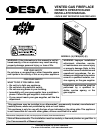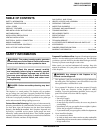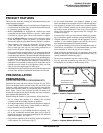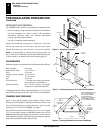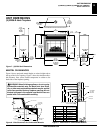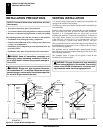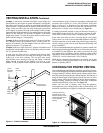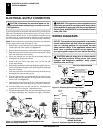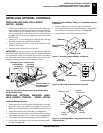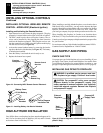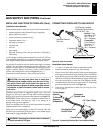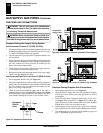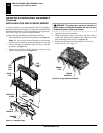Special offers from our partners!

Find Replacement BBQ Parts for 20,308 Models. Repair your BBQ today.
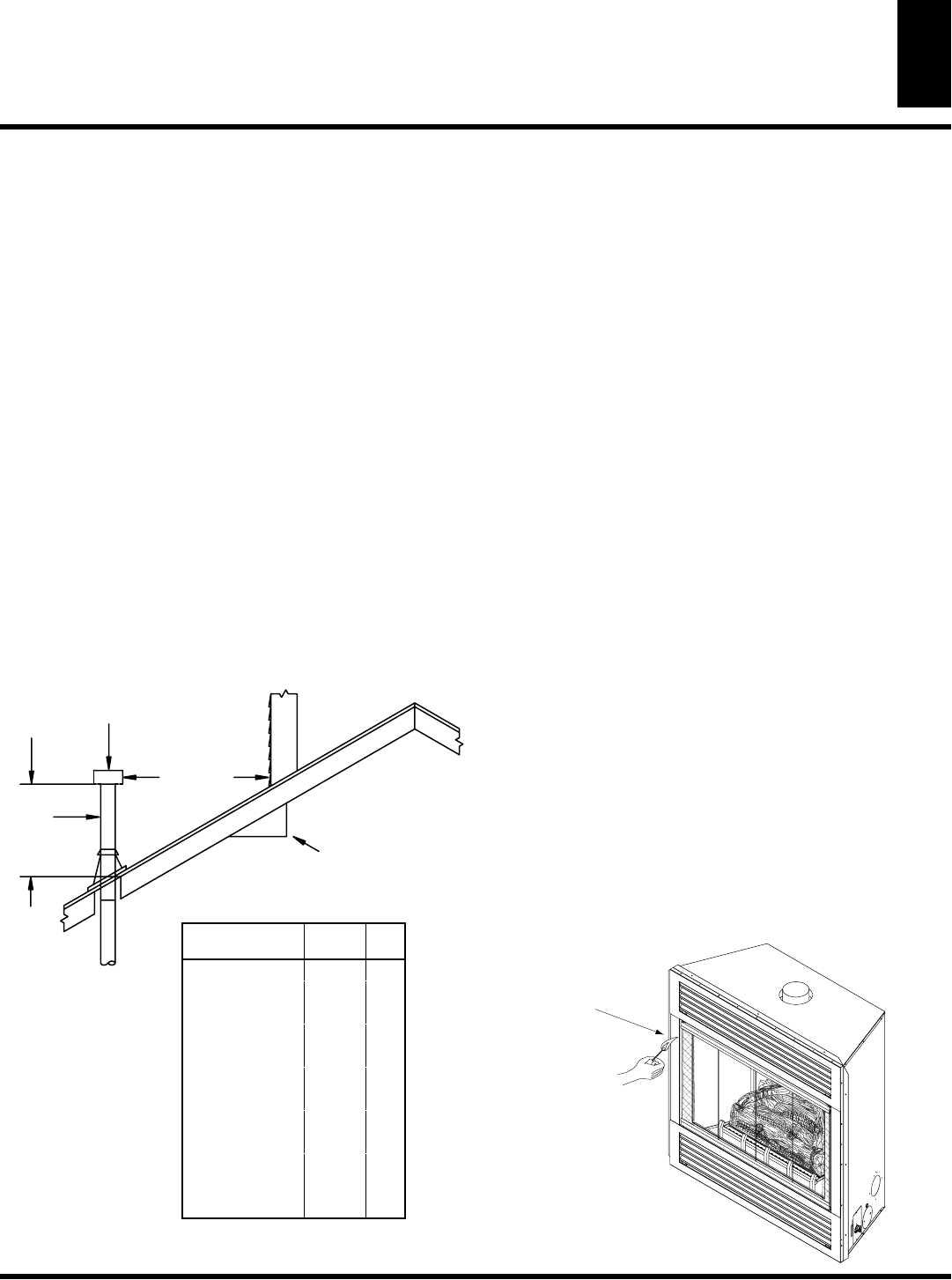
8
www.desatech.com
117437-01
VENTING INSTALLATION
Continued
Example 1:
Shows the minimum allowable system height and
lateral offset for a 60° degrees or greater inclination. Code specifi es
that offsets at 60° degrees or greater are considered horizontal and
must follow the 75% percent rule for lateral to total certical system
height. Codes also allows only one offset in the total system when
at 60° degrees or greater. The total vertical height in this example
represents the minimum height of 8 feet and therefore the allowable
lateral is 6 feet when the 75% percent rule applies. If the lateral
length must exceed 75% then the system must be sized in accor-
dance with the Category I venting tables.
Example 2:
Shows multiple offsets each at 45° degrees of inclina-
tion. Multiple offsets are permitted if they do not exceed 45°
degrees of inclination. The total lengths of the two offsets are not
required to meet the 75% percent rule.
Example 3:
Shows a single offset at 45° degrees of inclination and
therefore the lateral length at 10 feet of offset does not have to meet
the 75% percent allowable rule.
In each case the offsets must be supported and fi restops must
be positioned wherever the vent must pass through a sub-fl oor,
ceiling joist or an attic overhang. The vent pipe must termi-
nate vertically into a listed type vent cap and extend a suffi cient
height through an approved roof fl ashing, roof jack or a roof
thimble. At all points the listed clearances must be maintained.
Figure 11 - B-Vent Termination
Figure 12 - Checking for Spillage
VENTING INSTALLATION (Cont)
Listed
Vent Cap
Lowest
Discharge
Opening
Listed Gas
Vent
H (Min)
Height
From Roof
x
12
8 Ft. Min.
Roof Pitch x/12
Listed Clearance
Roof Pitch
H (Min.)
Ft. m
Flat to 6/12 1.0 0.30
6/12 to 7/12 1.25 0.38
Over 7/12 to 8/12 1.5 0.46
Over 8/12 to 9/12 2.0 0.61
Over 9/12 to 10/12 2.5 0.76
Over 10/12 to 11/12 3.25 0.99
Over 11/12 to 12/12 4.0 1.22
Over 12/12 to 14/12 5.0 1.52
Over 14/12 to 16/12 6.0 1.83
Over 16/12 to 18/12 7.0 2.13
Over 18/12 to 20/12 7.5 2.27
Over 20/12 to 21/12 8.0 2.44
Vent terminations must be located in accordance with height and
proximity rules of NFPA No. 54 or CAN/CSA B149. These rules
apply to vents at 12 in. diameter or less and require a minimum
height in accordance with the roof pitch and a minimum of 8 ft.
distance from a vertical wall or obstruction (see Figure 11).
If venting horizontally through a side wall becomes necessary, a
listed thimble approved for use with B-type vent must be used.
Check with your local codes before venting through a side wall.
Some codes areas allow the use of existing B-type vent systems
if the system is at or above the recommended diameter of the fl ue.
The fl ue connection must be made using listed B-type connectors
and the existing system must be code inspected for damage and
proper installation.
It is not recommended that this appliance be common vented with
and existing gas burning appliance. However, if it becomes necessary
to common vent the appliance. the venting system must be sized
and confi gured in accordance with the common venting guides
Appendix G of the current
National Fuel Gas Code NFPA No. 54/
ANSI Z223.1
and in Canada with
CAN/CSA B149.
Note:
Before connecting this appliance to an existing vent system
or a common venting system consult with your local architect
planner, or building offi cial.
CHECKING FOR PROPER VENTING
After completing and checking the electrical, gas and vent connec-
tions, follow the lighting instructions and allow the main burner to run
for approximately 5 minutes. Hold a match or butane lighter fl ame,
near the opening between the glass and the fi replace face and play it
along the entire length of the opening (Smoke may also be used).
Proper venting will tend to draw fl ame or smoke into the appliance.
Improper venting, escaping or spillage of burned gas, is indicated
when the match fl ickers or goes out. See Figure 12.
Smoke will also tend to disperse away from the appliance.
If the appliance is not venting properly, shut it off and notify your
installer or a qualifi ed service agency to inspect the venting system.
Check this area along
the entire length of the
fireplace opening. Smoke
or flame should be drawn
into the appliance
opening.
CHECKING FOR PROPER VENTING



